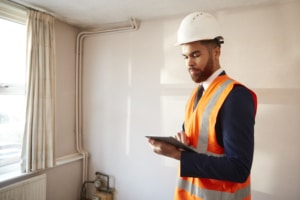Florida Homeowner Resources for Tampa Bay
Are you looking for Homeowner resources for your home here in Tampa Bay to help you manage and maintain your property? As your experts for home inspection services, we go the proverbial “extra mile.” Today is all about information to help you with such resources as well!
Homeownership Assistance Programs
If you are a first-time home buyer in Florida, you might be eligible for one of the statewide and regional homeownership assistance programs. Visit HUD.gov, the official website of the U.S. Department of Housing and Urban Development for more information and an overview of these programs.
Tax Relief Programs
First-Time Homebuyer Act of 2021
At the time of this blog post (January 2023), the First-Time Homebuyer Act of 2021 is still a bill, i.e., has not yet been signed into law. The bill proposes a tax credit of up to USD 15,000 for qualifying first-time homebuyers.
Energy Efficient Home Improvement Credit
Another program you might be eligible for is a tax credit for homeowners who make energy-efficient retrofits to their homes. Visit the IRS website for details,, examples, and frequently asked questions.
In addition, have a look at the Florida Department of Agriculture and Consumer Services’ website for more information about Florida incentives for energy-efficient homes.
By the way: If you have a particular interest in energy-efficient upgrades for your home, the Florida PACE Program might be another great resource for you!
Homestead Exemption
As a permanent resident in Florida, you may be eligible for a homestead exemption. This exemption would decrease the taxable value of your property by up to USD 50,000.
Speaking of Property Tax: If you sometimes find the system confusing, here’s a practical overview by the Florida Department of Revenue!
Homeowner Education Courses
Are you a homeowner in the Tampa Bay area looking to brush up on your homeownership knowledge? There are several homeowner education courses you can take. These courses are designed for giving you a better understanding of your rights and responsibilities as a homeowner.
Even more important, participating in one of the approved courses might be one of the requirements to be eligible for a mortgage or one of the various homeownership assistance programs (check with your local HUD office.)
Example: Fannie Mae offers “HomeView,” a free online certification course that you can take to fit into your own schedule.
Homeowner Repair/Improvement Grants and Assistance Programs
Try applying for a grant if you’re a homeowner in the Tampa Bay area and need extra financial assistance for home repairs or improvement projects:
- U.S. Department of Agriculture – Single Family Housing Repair Loans & Grants in Florida
- U.S. Department of Housing and Urban Development – List of several grants/assistance programs for home repairs
- Here’s a great article about home repair and/or improvement grants and assistance programs.
Looking for Homeowner’s Resources for Residential and Commercial Property Inspection in Tampa Bay?
Guess what? You have already found them here! But seriously: Give us a call – We look forward to hearing from you!











